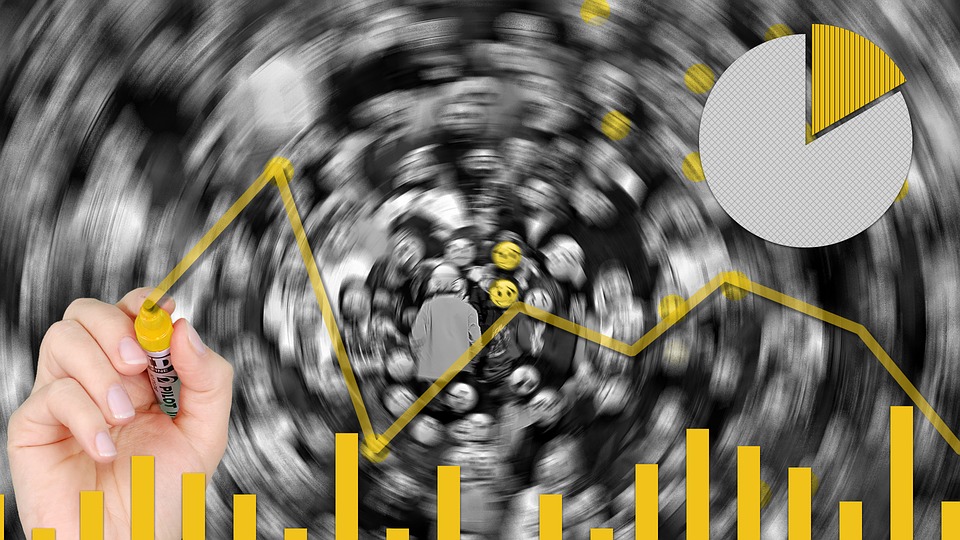Difference between Big Data and Data Analytics

There are various terminologies in digital technology that can make you confused. Such are the terms like big data and data analytics, that sound similar but have different meanings. They are important if one wants to use the data for business development. You can study the behavior of the customer, solve employee-related issues and get more profit.
But before understanding the difference between big data and data analytics, let us check out what these terms mean.
Big Data
Big data is the large volume of data which is in various forms like unstructured and raw, structured and semi-structured data. Big data is complex as it is collected from different kinds of sources. It is difficult to manage big data through traditional data management tools. For processing and storing the data, you need specialized and effective tools.
Big Data is used in various fields such as communication, banking, financial services, media, and so on. There are also different sources of big data like a data warehouse, social media sites, sensors, and stock exchanges. These are later used to make strategic decisions.
To better understand the difference between big data and data analytics, it’s essential to note that while big data refers to the massive volume and variety of data collected, data analytics involves analyzing this data to extract actionable insights. Knowing the difference between big data and data analytics can significantly enhance how you leverage data for business improvements.
The best part about Big Data is it has great velocity and so it helps in improving the operational work. Apart from that Big Data is secure and can help in preventing fraud. One can take advantage of it if you are aware of the type of technologies it uses.
Big Data is based upon variety which means data is available in various forms like audio, text, image, video, XML, and so on. Recognizing the difference between data and big data is crucial as it highlights the scale and complexity of data being handled.
Understanding these distinctions—big data and data analytics, difference between big data and data analytics, and difference between big data and big data analytics—can help you make more informed decisions and utilize data more effectively in your business strategies.
Data Analytics
Data Analytics is more about studying historical data, analyzing it, and further deriving conclusions from it to provide effective solutions to the problems which businesses face. It helps in improving the overall performance of the business and enhances productivity. There are four types of data analytics which include:
- Descriptive
- Diagnostic
- Predictive
- Prescriptive
Data Analytics is applied in multiple disciplines such as gaming, traveling, healthcare, risk management, and research.
Some of the major advantages of implementing data analytics are quality control, real-time forecasting, data-driven marketing, and effective decision-making.
Now let us look at the difference between big data and data analytics:
- A large chunk of data is known as big data which keeps on increasing with time at great speed. On the other hand, data analytics involves analysis of the raw data and thus, concluding. Understanding the difference between data analytics and big data is crucial as it helps in distinguishing between managing vast amounts of data and extracting insights from it.
- The types of Big data are: Structured, Unstructured, and Semi-structured whereas data analytics are of four types known Descriptive, Diagnostic, Predictive, and Prescriptive.
- The objective of big data is to store a large amount of data and later on process it through the right tools. Data analytics is designed to analyze the raw data and get some specific insights for reaching solutions.
- Advanced automation tools as well as parallel computing are used to manage big data. In data analytics, simple tools such as statistical modeling are applied.
- The big data professionals work on big data whereas there are skilled data analysts who understand the data in depth and thus, prepare graphs or charts.
- To process big data one needs knowledge about programming, distributed systems, NoSQL databases, and frameworks. On the other hand for data analytics, one needs programming skills and knowledge of statistics and mathematics.
- Big Data is applied in areas like banking, financial services, media, communication, and such. Businesses use data analytics for mitigating risk and it is even used in the field of science, health care, information technology, traveling, and gaming.
- Big Data is mainly to manage a huge volume of data whereas data analytics checks the raw data, examines it deeply, and later uses it for finding solutions.
- Big Data is the initial stage for data generation and then comes the data analytics stage.
- Examples of big data tools are Apache Hadoop, MongoDB, Cloudera Distribution for Hadoop, Cassandra, etc. Tools of data analytics are Tableau Public, Apache Spark, Python, Excel, Rapid Miner, Google Fusion Tables, and such.
Difference Between Role of a Big Data Management Professional and a Data Analyst
Apart from the above, there is a difference between the role of a big data management professional and a data analyst.
Big Data managers have the following roles:
- Find out the bottlenecks in the system
- Keep a check on fraudulent transactions
- Develop a huge data processing system
- Build distributed systems that are highly scalable.
- Real-time analysis of the data
Data Analysts have below roles:
- Acquire the data, analyze it and give the summary or draw inferences.
- Examine data to come at valuable insights
- Use reporting tools to create data reports
- Specify recommendations after identifying the pattern
Final Remarks
From the above, you must have got clarity about the difference between big data and data analytics. Big Data involves complex data whereas data analytics involves understanding the data in detail and further modeling it to get the required information. Hence, both if used together can help in taking strategic decisions and avoiding losses.
Read Also:
